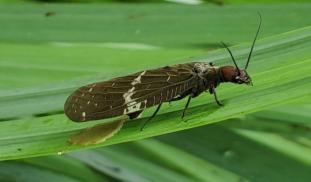Please wait...
About This Project
Successful freshwater conservation efforts require an understanding of genetic diversity and how it changes over time, data we often lack. This study will revisit populations of the saw-combed fishfly (an environmentally sensitive aquatic insect) sampled ~20 years ago to see which populations survived, how genetic diversity has changed, and whether next-generation DNA sequencing gives us a better understanding of how this species recolonized North America after the last glacial retreat.

Browse Other Projects on Experiment
Related Projects
How do polar bears stay healthy on the world's worst diet?
Polar bears survive almost entirely on seal fat. Yet unlike humans who eat high-fat diets, polar bears never...
Uncovering hidden insect diversity associated with a likely undescribed gall-forming midge
Does a likely undescribed species of gall-forming midge (pers. comm. Ray Gagné) on Eriodictyon plants (Yerba...
Macrofungi of the California archipelago
The eight islands of the California Archipelago are a well-studied biodiversity hotspot — but we know almost...




